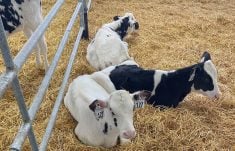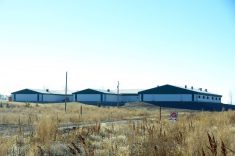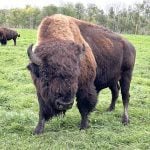Even animal death in a barn fire is one too many. But at first glance, it would seem Alberta has a reasonably good handle on them.
A recent study found that during a five-year period (2015-19), Quebec had 141 barn fires and Ontario 121 — but there were just eight barn fires in Alberta. The figures for animal deaths (poultry account for roughly three-quarters of them) in those fires are 388,000 in Quebec, just under 150,000 in Ontario and about 78,000 in Alberta.
But those numbers can be misleading, according to the animal welfare organization that conducted the study.
That’s because Ontario and Quebec are the only provinces with official recording and reporting systems for barn fires and deaths, said Riana Topan of Humane Society International/Canada.
“This is obviously a very tragic, very terrible but often hidden national issue that affects a lot of animals and causes a lot of suffering — not just for animals but also for the farmers, communities and local first responders involved,” said Topan. “It’s a lose-lose issue for everyone.”
Her organization’s report was intended to increase awareness of the problem, particularly among policymakers, notably the Canadian Commission on Building and Fire Codes (which is releasing revised codes this year).

“Historically, (building) codes have not been intended in the case of farms to protect animals,” she said. “At the time we released the report last year, we knew that the national building and fire codes were being revised so we’re hoping that whenever those are released we will see a change.”
It’s overdue, she added.
“We’ve got quotes from fire officers and chiefs, first responders and farmers who talked about how horrible the damage was and how horrific it was to hear the screams of these animals trapped inside these burning buildings,” said Topan. “It’s something no one ever wants someone to have to go through.
“The issue is relatively unknown and underreported. We want to bring more attention to it.”
Read Also

The long march to autonomy
The big players in the machinery market keep adding pieces towards autonomous vehicles for farming, but how far away is a final product?
Horrible cost
According to the report, at least 740,000 farm animals died in barn fires in Canada during the five-year period, with chickens accounting for 74 per cent of that total. Often tens of thousands of birds are killed in a single blaze, but there have also been individual fires in which more than 10,000 pigs have died.
More than 100,000 pigs died in fires from 2015-19, the report says, while just under 10,000 cattle perished. (However, incidents involving cows represented close to 50 per cent of all known barn fires.)
All of this came at a horrible cost to the producers involved, including a financial one, with damages from barn fires ranging from a few hundred thousand to multiple millions of dollars.
“In most cases, it takes a number of years for a farmer to rebuild whether or not they have insurance, with which it can still take quite a while,” said Topan.
Based on the data it could gather, Humane Society International/Canada pegged the financial losses at between $167 million and $175 million over the five years — an estimate it says is conservative.
But getting numbers is challenging because of a lack of systematic reporting.
“We got every possible news story between 2015 and 2019 and wherever they indicated the number of animals or the amount of loss — whether it was financial or there were injuries to the human individuals involved — we recorded whatever from that we could,” she said. “Obviously relying on media reports is not the most effective and accurate record of all fires.”
This highlights the need for dependable barn fire reporting across the country, she said.
The cause of fires can be even murkier as in many cases, authorities don’t know for sure.
The study found only about a third of the 327 known barn fires were identified as having either a definitive or suspected cause. Often the severity of the blaze makes investigations exceedingly difficult.
However, in cases with a definitive or suspected cause, 76 per cent were either electrical or mechanical failures.
Humane Society International/Canada has a wish list of prevention measures — including fire extinguishers; sprinkler systems; on-site water storage; smoke, heat and carbon monoxide detectors; and fire separation walls.
More oversight is also needed, said Topan.
“(Having) regular inspections involving local fire departments where possible and an emergency plan in place are, of course, incredibly important,” she said.
The report can be found at www.hsi.org (search for ‘Canada barn fires’).
















